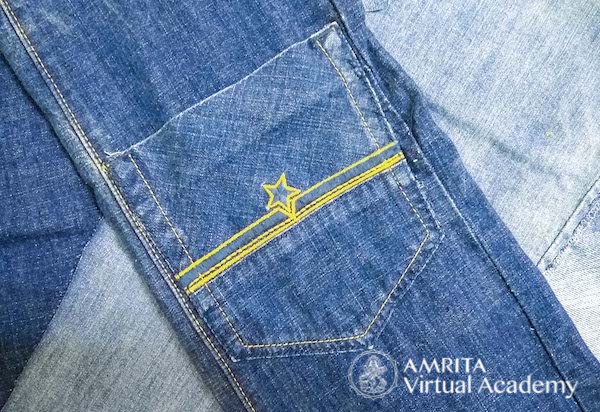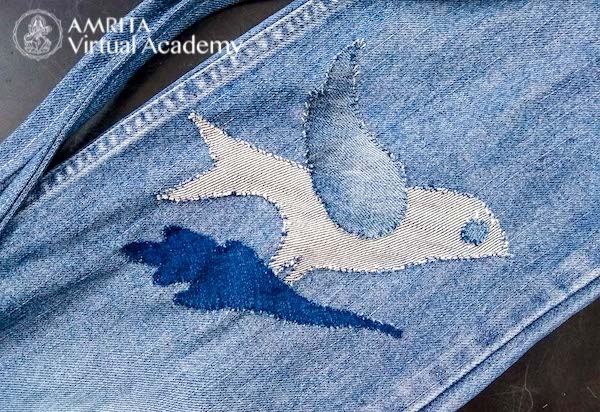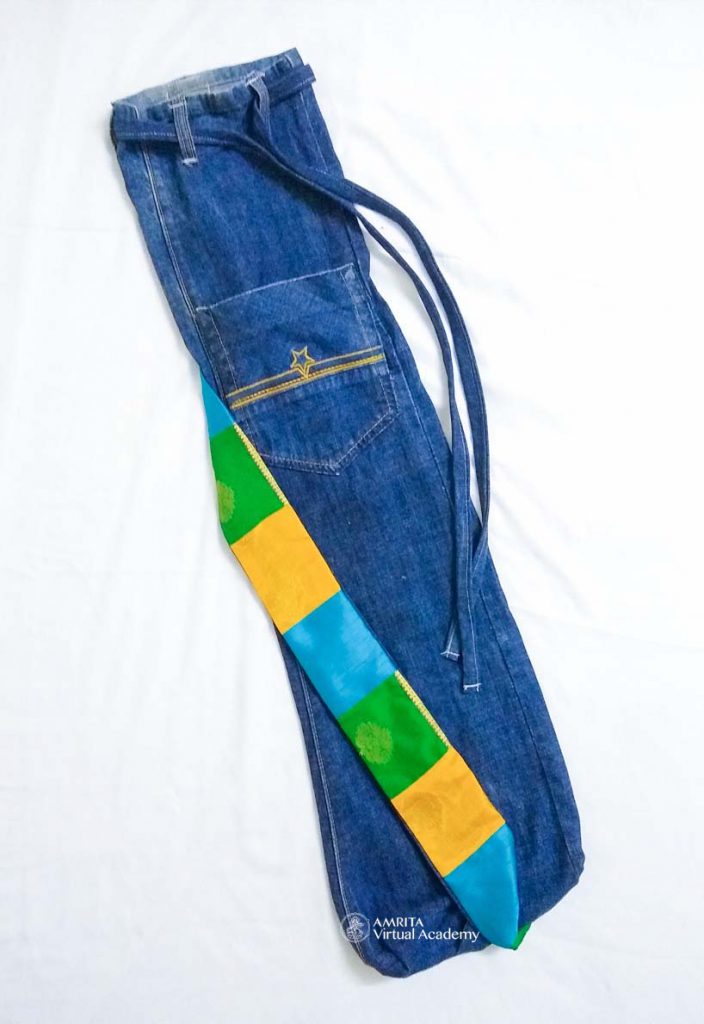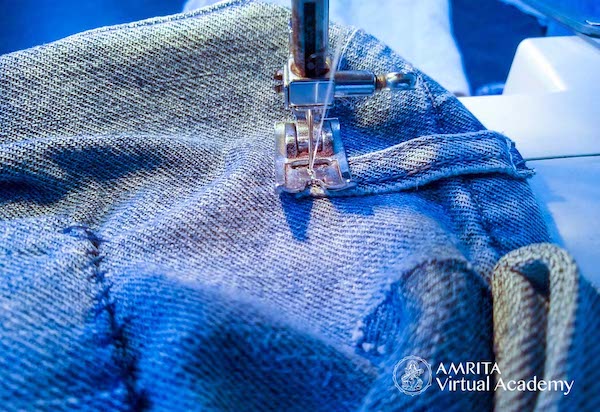
Jeans and the Future of our World
How do we take our used clothes and contribute to sustaining the future of our planet? The answer to this question is evolving in inspiring and powerful ways, from our own (often overcrowded) closets to the massive production lines of the fashion industry.
Let’s start with the global clothing and textile sector….
With a creative fire, the concept of upcycling is dawning in the world of fashion—and with good reason. The industry has a critical role to play in achieving the United Nations’ Sustainable Development Goals.
Clothing and textile is a $2.4 trillion-dollar global entity that employs approximately 300 million people across the value chain, many of whom are women, and the scale of the industry is only expected to grow over the coming years.
But alongside, there are currently serious unsustainable practices that include social and environmental consequences. The United Nations Environment Programme states that without major change to production processes and consumption patterns in fashion, the social and environmental costs of the sector will continue to mount.
Facts include:
- Fashion is responsible for an estimated 2-8% of the world’s greenhouse gas emissions.
- Around 215 trillion liters of water per year are consumed by the industry.
- Textiles account for approximately 9% of annual microplastic losses to the oceans.
With its progressive actions that look at how to move forward rather than dwelling on the negative, the UN launched the Alliance for Sustainable Fashion in March 2019. Its participants include members of the fashion industry, environmental organizations and labor groups. They work together to find sustainable solutions that go from raw materials to production to waste streams.
The fashion industry is beginning to evolve in alignment. Partly this must be thanks to the creative ways of thinking in design, as well as the fact that fashion needs people to buy its products. Regardless, it is inspiring to see that upcycled designs have started to appear on the runways with this new social vision.
In November 2020, Vogue Magazine published an article that upcycling was the season’s biggest trend. Young independent designers had started long before, making their names by repurposing textiles that already existed. But major luxury brands finally decided to follow suit.
Recutting, redying, reusing whatever old or unsold material they had on hand led to unique items. It was a process that also lay within the context of COVID-19, as new fabric was often not available. In the long run, it will also require the fashion industry to restructure itself overall and that will take time. But at least something has begun.
So how do we take part in this movement within our own daily lives?
It’s easy, but first, the term ‘upcycling’ needs to be clearly understood. Wikipedia, also using the term ‘creative reuse’, says it is the process of transforming by-products, waste materials, useless, or unwanted products into new materials or products perceived to be of greater quality, such as artistic value or environmental value.
The web is teeming with imaginative ideas for DIY upcycling, including for clothes, so this inspired us in Amritapuri to give it a try. As Amma says, “Don’t be discouraged by your incapacity to dispel darkness from the world. Light your little candle and step forward.”
In Amritapuri, people donate a lot of western style pants to Ram’s Bazaar, a place that gives second-hand goods a new life. Yet due to the hot and humid climate, people often do not need them. I came up with the idea to upcycle the unused pants into yoga mat bags for the Ecology Center, as its founding principle is to care for Nature.
The idea for the Ecology Center was presented to Amma in 2004, and Amma enthusiastically agreed. The concept was to educate people about how they could begin to avoid negatively impacting their environment and bodies. Amma immediately said to establish the center in an old house at the Ashram which was being used for storage.
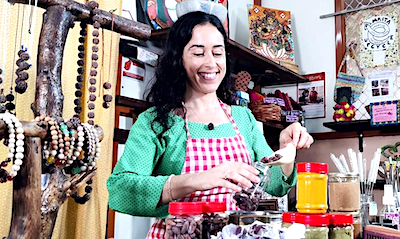
The Ecology Center seeks to offer 100% natural products to replace conventional, harmful chemical products and encourages recycling and saving water. All proceeds go to the humanitarian initiatives of Embracing the World. There is a wide range of ecological choices, including food, body care, books and local handicrafts. The sevites buy in bulk where possible and repack items themselves to promote the optimal use of recyclable plastic containers. They provide certified organic food and fair-trade merchandise.
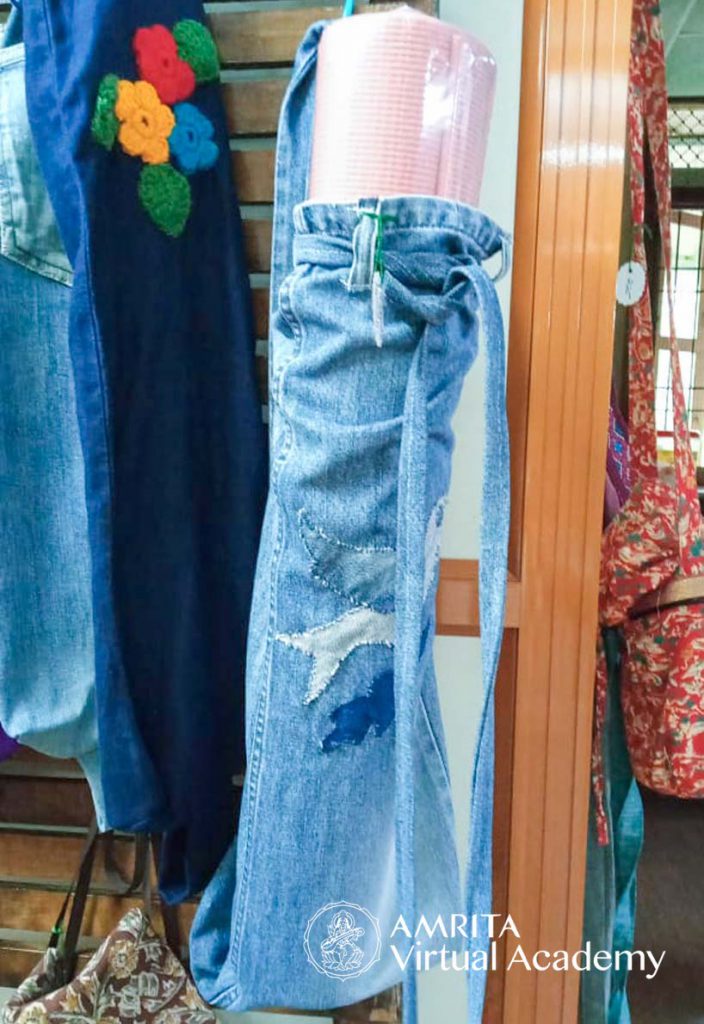
The Ecology Center also makes its own range of items, from organic nut butters to natural, chemical-free cleaning products for both body and household use. In terms of upcycling, the center has handicrafts made in the Ashram that creatively reuse plastics. Amrita Upcyling makes fashionable and practical items, such as tote bags and wallets, out of what would otherwise be waste.
So in that context, this latest endeavor—the upcycled yoga mat bags made from used clothing—is a hit, especially the bags made from jeans. People from all over the world arrive asking about them.
After a lot of research, I wrote an easy pattern, as trust me, I am not an expert tailor. Since it is based upon the principle of DIY, I decided to share it here. May the Creative Force be with you!
Download the DIY Pattern: bit.ly/upcyclethis
Download the pattern to make your own yoga mat bag.
Want to learn more about Amrita Upcycling? Check out a new workshop from Amrita Virtual Academy & pre-register your interest.

